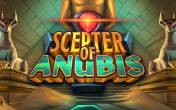
The Monte Carlo method is a powerful statistical technique that uses randomness to solve complex problems. Named after the famous Monte Carlo Casino in Monaco—known for its association with games of chance—this method has become a valuable tool in many fields, including physics, finance, engineering, and, of course, gambling.
At its core, the Monte Carlo method involves repeatedly running simulations with random inputs to approximate solutions to problems that are otherwise difficult to calculate. This makes it particularly well-suited for scenarios where the outcome is uncertain or where many variables interact unpredictably.
The Monte Carlo method allows players and analysts to model games, estimate probabilities, and develop betting strategies in gambling. It helps answer questions like, "What is the probability of winning with this hand in poker?" or "How might a betting strategy perform over thousands of roulette spins?" By using simulations to mimic real-life gambling scenarios, the Monte Carlo method provides a way to approach the uncertainties inherent in games of chance.
Understanding the Monte Carlo Method
The Monte Carlo simulation is a computational technique that uses repeated random sampling to obtain numerical results.
The core idea is to use randomness to solve problems that might be deterministic in principle but are too complex to solve directly. By simulating many scenarios, the Monte Carlo method can provide estimates for a wide range of problems, from the behavior of subatomic particles to predicting stock prices.
The method's basic principle is straightforward: it involves creating a model of the problem, generating random inputs, running simulations, and then analyzing the outcomes. The more simulations run, the more accurate the approximation becomes, as the law of large numbers ensures that the average of the results will converge to the actual value.
For example, if you wanted to estimate the probability of winning a particular hand in poker, you could set up a model of the game, deal thousands or even millions of hands using random inputs, and then calculate the percentage of times that hand results in a win. This approximates the hand’s probability, even if the exact calculation is too complex to derive analytically.
The Monte Carlo method is precious when dealing with problems involving many variables or interactions, where traditional analytical approaches struggle. Instead of solving these problems with a direct formula, Monte Carlo simulations break down the complexity into manageable simulations, making exploring different outcomes and scenarios possible.
This ability to model and simulate complex systems makes the Monte Carlo method a versatile tool in gambling, where chance and probability play a central role. Whether estimating a betting strategy's long-term results or calculating a game's expected value, the Monte Carlo method provides a practical way to navigate uncertainty and make more informed decisions.
The History of the Monte Carlo Simulation
The Monte Carlo approach has roots in the early 20th century and has evolved significantly. It derives its name from the famous Monte Carlo Casino in Monaco, reflecting the element of randomness and chance intrinsic to gambling and statistical simulations.
The origins of the Monte Carlo method can be traced back to the development of probability theory in the 17th century. Mathematicians like Blaise Pascal and Pierre de Fermat laid the groundwork for understanding random events, which would later inform the statistical principles behind the Monte Carlo technique. However, it wasn't until the 20th century that these theoretical concepts began to be applied in practical, computational contexts.
The method as we know it today emerged during World War II, primarily through the work of scientists and mathematicians involved in the Manhattan Project. Notably, physicists Stanislaw Ulam and John von Neumann played crucial roles in its development. Ulam began exploring the idea of using random sampling to solve complex mathematical problems, particularly in nuclear physics and radiation, while recovering from an illness.
The concept was formalized when Ulam and von Neumann developed a technique to model the behavior of particles in various scenarios, using random numbers to simulate outcomes. This work laid the foundation for what would become the Monte Carlo method.
Ulam and von Neumann coined the name "Monte Carlo" due to the method's inherent reliance on randomness, which parallels the unpredictability of gambling outcomes. The association with the Monte Carlo Casino highlighted the playful and uncertain nature of the simulations they created.
While the method was initially developed for scientific and engineering applications, its principles have been embraced by the gambling community. Gamblers began to apply Monte Carlo simulations to analyze game strategies, evaluate odds, and understand the probabilities of different outcomes. Players can gain insights that inform their betting decisions by modeling thousands of hands in poker or spins on a roulette wheel.
Today, the Monte Carlo method is widely used across various disciplines, from finance and engineering to computer science and artificial intelligence. In gambling, it continues to be a valuable tool for professional players and casual enthusiasts, providing insights into strategy and risk management.
Monte Carlo Simulation in Gambling Games
The Monte Carlo method has found a natural fit in gambling, where randomness and probability are the name of the game. By simulating various outcomes of games of chance, it allows players and analysts to gain insights into probabilities, expected returns, and potential risks, providing a deeper understanding of how different strategies might play out over time.
The essence of the Monte Carlo method in gambling is using repeated simulations to estimate the probabilities and outcomes of different games.
For instance, instead of relying solely on theoretical probability calculations, gamblers can run thousands or even millions of simulated game rounds to observe the likely outcomes. This approach helps model real-world conditions more accurately, including variations and streaks that are hard to account for in basic probability.
Monte Carlo simulations can be applied to almost any gambling scenario. Whether it’s spinning a roulette wheel, dealing a hand of poker, or playing a slot machine, the method allows gamblers to simulate and analyze possible outcomes, providing estimates for win rates, payouts, and the long-term profitability of certain bets.
Monte Carlo Simulation for Roulette
Let’s consider how the Monte Carlo method can be applied to a simple game like roulette. In European roulette, there are 37 numbers: 1-36 and a single zero. The task might be to estimate the likelihood of a number landing on red. By setting up a Monte Carlo simulation, you could simulate, say, 100,000 spins of a virtual roulette wheel. A random number is generated for each spin, and if it corresponds to a red number, it’s counted as a win. After all the spins are completed, the proportion of wins estimates the probability of landing on red.
Through this process, the Monte Carlo simulation would show that the probability of landing on red in European roulette is approximately 48.65%, closely matching the true theoretical probability. This method is especially useful when trying to understand how certain betting strategies might perform over many spins, helping to assess risks and potential rewards.
| Name | Soft | Return to player | |||
|
|
98.6% |
Play
T&C applies, 18+
|
|||
|
|
97.3% |
Play
T&C applies, 18+
|
|||
|
|
97.3% |
Play
T&C applies, 18+
|
|||
|
|
97.3% |
Play
T&C applies, 18+
|
|||
|
|
97.3% |
Play
T&C applies, 18+
|
|||
|
|
97.3% |
Play
T&C applies, 18+
|
|||
|
|
97.3% |
Play
T&C applies, 18+
|
|||
|
|
97.3% | ||||
|
|
97.3% |
Play
T&C applies, 18+
|
|||
|
|
97% |
Play
T&C applies, 18+
|
Monte Carlo Simulation for Poker
Hands In poker, players often need to calculate the likelihood of winning with a specific hand against potential opponents. A Monte Carlo simulation can be used here to estimate the probability of different outcomes. For example, in Texas Hold'em, you might want to know the probability of winning with a pair of Aces against a range of possible hands.
By running a Monte Carlo simulation, you can simulate thousands of hands dealt with various board cards and calculate how often the pair of Aces would come out on top. The simulation can provide a probability of winning based on all possible scenarios, helping the player make better decisions about when to bet, raise, or fold.
These examples illustrate how the Monte Carlo method allows gamblers to go beyond intuition or basic strategy, using data-driven insights to inform their gameplay.
Applications for Advantage Gamblers
The Monte Carlo method is not just a tool for casual gamblers; it's also valuable for advantage players—those who use various techniques to tilt the odds in their favor. These players rely on a deep understanding of probability, strategy, and risk, and the Monte Carlo method offers a way to refine their approaches through detailed simulations.
Here are some key applications of the Monte Carlo method for advantage players.
Card Counting in Blackjack
One of the most well-known advantage play techniques is card counting in blackjack. By keeping track of the cards that have been dealt, card counters can estimate the likelihood of certain cards appearing in upcoming hands, thereby adjusting their bets and playing strategy accordingly. The Monte Carlo method can assist in this process by simulating thousands of blackjack games under different conditions.
For example, a player could use Monte Carlo simulations to see how card counting affects the probability of winning at various points in a game. They might simulate scenarios with different counts and betting strategies to find the optimal approach. The simulations can help answer questions like, "What’s the expected return if I double my bet when the count is +2?" By running these simulations, card counters can fine-tune their approach to maximize profits and minimize risks.
| Name | Soft | Return to player | ||
|
|
99.78% | |||
|
|
99.69% | |||
|
|
99.65% | |||
|
|
99.6% | |||
|
|
99.59% | |||
|
|
99.54% | |||
|
|
99.54% | |||
|
|
99.54% | |||
|
|
99.33% | |||
|
|
98.55% |
Betting Strategies and Bankroll Management
Monte Carlo simulations are also valuable tools for testing different betting strategies. Common strategies, like the Martingale system or the Kelly Criterion, rely on adjusting bet sizes based on wins and losses. But before using these strategies in real games, players often want to understand their long-term effects, especially regarding bankroll management.
With the Monte Carlo method, gamblers can simulate thousands of betting sessions, applying a particular strategy each time. This allows them to see the impact on their bankroll over time, including streaks of wins and losses. For instance, if players want to test how the Martingale strategy holds up in a game like roulette, they can simulate a series of bets with varying outcomes. This helps reveal the potential for considerable swings in bankroll and the risk of running out of money during a losing streak.
Players can better understand the balance between risk and reward by simulating different betting strategies and making informed decisions about how much to bet, when to stop, and which strategies to avoid. For example, they might discover that the Martingale strategy, while tempting, carries a significant risk of quickly depleting their funds if a losing streak occurs, while the Kelly Criterion might provide a more balanced approach to managing risk.
Simulating Game Outcomes for Optimal Strategy
Advantage players often focus on finding the optimal strategy for a given game or scenario, and the Monte Carlo method can be instrumental in this quest. For example, in video poker, players need to decide which cards to hold and which to discard based on the expected value of each decision. A Monte Carlo simulation can help by simulating every possible outcome for different choices and comparing their expected values.
By doing so, players can determine which plays maximize their chances of winning over time. The method can be used to calculate the long-term expectation of every possible decision, providing a data-backed foundation for making optimal choices. This approach is not limited to poker but can also be applied to other skill-based games like blackjack, baccarat, or even specific sports betting scenarios.
These applications demonstrate how the Monte Carlo method allows advantage players to dig deeper into game dynamics, test theories, and find edges that casual players might miss.
Tools and Software for Monte Carlo Simulations
in Gambling While the Monte Carlo method can be done manually with enough time and patience, using specialized tools and software can streamline the process significantly, making it easier to run large-scale simulations quickly and accurately. Many of these tools are accessible to both beginners and advanced users, allowing gamblers to analyze complex scenarios with ease.
Below is an overview of popular tools and software for running Monte Carlo simulations in gambling.
- Excel with VBA (Visual Basic for Applications) is a widely used tool for creating simple Monte Carlo simulations, especially when combined with VBA. VBA allows users to automate the simulation process by writing small programs to generate random numbers and track the results. Excel is ideal for simulating simpler gambling games like coin flips, dice rolls, or basic card games. It can also be used to simulate betting strategies by automating calculations for wins, losses, and adjustments in the bankroll.
- Python is a versatile programming language popular for data analysis and simulations. It has libraries like NumPy for random number generation and Pandas for data manipulation, making it a strong choice for running Monte Carlo simulations. Python can handle complex simulations, such as calculating poker hand probabilities, modeling roulette strategies, or simulating thousands of spins on slot machines. It’s especially useful when dealing with large datasets or when multiple scenarios must be simulated.
- R is a statistical programming language that excels in data analysis and visualizations, making it a great choice for Monte Carlo simulations. Statisticians and data scientists particularly favor it. R is well-suited for simulating scenarios that require a strong focus on statistical analysis, such as analyzing the variance of different betting strategies or calculating expected value in complex card games.
- @RISK, Simul8, and other specialized packages are designed for such simulations. These tools often have built-in features for creating simulations, generating random variables, and analyzing results. They can also be used to test complex betting systems, run thousands of game simulations, and generate detailed reports.
- Online simulators and calculators allow users to run Monte Carlo simulations directly in their browser without downloading any software or writing code. Online simulators can be a great way to quickly analyze simpler games like dice rolls, coin flips, or blackjack hands. They often have predefined settings and models for popular gambling games.
These tools and software allow gamblers to effectively run Monte Carlo simulations to analyze their games and strategies.
Pros and Cons of the Monte Carlo Method in Gambling
While the Monte Carlo method is a powerful tool for analyzing and simulating gambling scenarios, it comes with its strengths and weaknesses. Understanding these benefits and limitations is crucial for gamblers who want to use this method effectively to improve their strategies and decision-making.
Benefits
- Models Complex Scenarios: One of the greatest advantages of the Monte Carlo method is its ability to model complex systems where multiple variables interact in unpredictable ways. In gambling, even games with intricate rules and multiple possible outcomes, like poker or sports betting, can be simulated to assess different probabilities and outcomes.
- Allows for Strategy Testing: The Monte Carlo method enables players to test various betting strategies before committing real money. For example, a player can simulate how a Martingale or Paroli system would perform over thousands of games, helping them understand the potential risks and rewards without having to experience these in a real-life casino setting.
- Helps in Risk Management: By simulating a wide range of scenarios, the Monte Carlo method gives players a clearer picture of possible risks and how these risks can impact their bankroll. For instance, players can estimate the chances of going on a losing streak that might deplete their bankroll, allowing them to plan safer betting amounts.
- Provides Insight into Expected Value: Expected value (EV) is a crucial concept in gambling, representing the average result of a particular bet over time. The Monte Carlo method can help estimate the EV of different bets or hands in games like blackjack or poker, guiding players on whether to play aggressively or conservatively based on their calculated advantage.
- Informs Long-Term Decision-Making: Since the Monte Carlo method can simulate thousands or millions of game rounds, it helps gamblers understand the long-term performance of their strategies. This is particularly useful in games with a low house edge, where the long-term behavior of bets can differ significantly from short-term outcomes.
Limitations
- Computational Intensity: Running Monte Carlo simulations can require significant computational power, especially when simulating complex games with many variables. For example, simulating millions of poker hands with different player strategies can demand substantial processing time, even with modern computers.
- Approximations, Not Certainties: While Monte Carlo simulations can provide estimates and probabilities, they do not guarantee outcomes. The results are based on a sample of possible scenarios, which means they can be influenced by the randomness inherent in each simulation. As a result, simulations may sometimes produce results that deviate from theoretical probabilities.
- Dependence on Accurate Models: The accuracy of a Monte Carlo simulation is heavily reliant on the quality of the model used. For instance, if a poker simulation does not properly account for how opponents play or bluff, the resulting probabilities might be misleading. This means that players need to have a good understanding of the game they are modeling to build accurate simulations.
- Limited Usefulness for Short-Term Analysis: While the Monte Carlo method excels at analyzing long-term probabilities, it is less effective for understanding short-term trends or streaks, often the focus of many gamblers. For example, it might not predict when a losing streak will end or the next win will likely occur in games like slots.
- Requires Understanding of Probability and Statistics: Effectively using the Monte Carlo method requires a basic understanding of probability, statistics, and programming (if using tools like Python or R). For some gamblers, the learning curve might be steep, making it difficult to use this method without investing time in mastering the underlying concepts.
By weighing these benefits and limitations, gamblers can decide when and how to use the Monte Carlo method to enhance their understanding of games.
Examples of Monte Carlo Simulations in Popular Casino Games
To understand the practical applications of the Monte Carlo method in gambling, it’s helpful to look at specific examples in popular casino games.
Blackjack: Calculating the Expected Value of a Strategy
- Scenario: A player wants to know the expected value (EV) of playing a specific blackjack strategy, such as always hitting on a soft 17 or doubling down on certain hands. The Monte Carlo method allows the player to simulate thousands of blackjack rounds using this strategy to see how it performs over time.
- Simulation Setup: The player creates a virtual deck of cards and writes a program (or uses software) that deals cards according to blackjack rules, simulates their chosen strategy, and records the outcome of each round. They repeat this process for 100,000 or more hands.
- Results: The simulation calculates the percentage of hands won, lost, or pushed, and the overall return on investment (ROI) for the strategy. For example, the player might find that hitting on a soft 17 leads to a lower long-term return compared to standing. The data can then guide the player toward the most profitable choices in future games.
Poker: Simulating Hand Probabilities
- Scenario: In Texas Hold’em poker, a player wants to estimate their chances of winning with a pair of Queens against two other opponents with unknown hands. Instead of relying on poker odds charts, they use the Monte Carlo method to simulate thousands of games with different possible hands for the opponents.
- Simulation Setup: The player creates a program that randomly generates community cards and possible opponent hands for each simulated game. The outcome is recorded for each run to determine whether the pair of Queens wins, ties, or loses.
- Results: After simulating 1,000,000 hands, the player can see that their pair of Queens wins about 65% of the time against two random opponents. This insight helps the player decide whether to call, raise, or fold in actual gameplay situations, based on the estimated probability of winning.
Roulette: Testing a Betting System
- Scenario: A player wants to evaluate the Martingale betting system in European roulette, where they double their bet after every loss and reset after a win. They want to know the risk of bankruptcy and how the strategy performs over long sessions.
- Simulation Setup: Using the Monte Carlo method, the player simulates 100,000 sessions of 200 spins each, starting with a specific bankroll and applying the Martingale strategy. Each session ends when the player either reaches a profit goal or runs out of money.
- Results: The simulation shows that while the Martingale system can achieve small wins frequently, there is a significant risk of hitting a long losing streak that quickly depletes the player’s bankroll. The results reveal that the expected outcome of the strategy is negative over time due to the house edge, making it risky for extended play. This allows the player to understand the dangers of using such a system.
Slot Machines: Understanding Variance and Volatility
- Scenario: A slot player is interested in understanding the volatility of a particular slot machine game. They want to estimate how often they are likely to hit a jackpot or experience long losing streaks.
- Simulation Setup: The player uses a Monte Carlo simulation to replicate the paytable of the slot machine and simulate millions of spins, with each spin randomly determining outcomes based on the machine's RTP (Return to Player) and hit frequency.
- Results: The simulation provides a detailed breakdown of how often different payouts occur, the typical lengths of winning and losing streaks, and the average time between hitting jackpots. This helps the player gauge whether the game suits their preferences for risk and reward, such as if they prefer frequent small wins or the chance at larger payouts.
These examples demonstrate how versatile and powerful the Monte Carlo method can be for gamblers.
| Name | Return to player | Max payout | Variance | Soft | ||
| 99.07% | x1000 | Low |
|
Play
T&C applies, 18+
|
||
| 99% | x12075 | High |
|
Play
T&C applies, 18+
|
||
| 98.72% | — | — |
|
Play
T&C applies, 18+
|
||
| 98.67% | — | — |
|
Play
T&C applies, 18+
|
||
| 98.6% | x670 | Low |
|
Play
T&C applies, 18+
|
||
| 98.18% | — | Low |
|
|||
| 98.13% | x15000 | High |
|
Play
T&C applies, 18+
|
||
| 98.12% | x10000 | High |
|
Play
T&C applies, 18+
|
||
| 98.12% | x500 | Low |
|
Play
T&C applies, 18+
|
||
| 98.11% | x1500 | High |
|
Play
T&C applies, 18+
|
||
| 98.11% | x7500 | — |
|
Play
T&C applies, 18+
|
||
| 98.1% | x2500 | — |
|
Play
T&C applies, 18+
|
||
| 98.1% | x2500 | — |
|
Play
T&C applies, 18+
|
||
| 98.03% | x15000 | Middle |
|
Play
T&C applies, 18+
|
||
| 98.03% | x5000 | Middle |
|
Play
T&C applies, 18+
|
Tips for Using the Monte Carlo Method Effectively in Gambling
To maximize the benefits of the Monte Carlo method, it’s important for gamblers to apply it thoughtfully. Here are some practical tips for using this technique effectively, ensuring that simulations are accurate, insightful, and aligned with real-world scenarios.
1. Start with Clear Objectives
- Define the Problem: Before running any simulation, have a clear idea of what you want to achieve. Are you testing the long-term profitability of a betting system, evaluating the variance of a specific game, or understanding the risk of ruin for a certain bankroll size? A clear goal ensures that the simulation is designed correctly and that you focus on relevant data.
- Identify Key Variables: Determine which variables are most important for your simulation, such as the odds of winning, bet sizes, game rules, or the duration of a session. Focusing on these critical factors can make your simulations more efficient and prevent you from wasting time modeling unnecessary details.
2. Use Realistic Inputs
- Gather Accurate Data: The accuracy of a Monte Carlo simulation depends on the quality of the data you use. If you're simulating poker hands, use realistic card distributions and probabilities. Base your inputs on actual game statistics and player performance data for sports betting. The more realistic your inputs, the more reliable your results.
- Account for House Edge: Always include the house edge in your calculations when simulating casino games. This is the built-in advantage that the casino has over the player. By including the house edge, your simulations will better reflect real-world outcomes and help you understand the impact of this edge on your strategy.
3. Run a Sufficient Number of Simulations
- Avoid Small Sample Sizes: Running only a few simulations can produce results that are skewed by randomness. To get a reliable estimate, aim to run thousands or even millions of iterations, depending on the complexity of the game and the number of variables. A larger sample size provides a more accurate picture of possible outcomes and reduces the influence of outliers.
- Check for Convergence: Monitor whether your simulation results are stabilizing as you increase the number of iterations. For example, if you are estimating the win rate of a poker hand, the percentage should stabilize around a certain value as the number of simulated hands increases. This indicates that the simulation has reached a reliable result.
4. Interpret Results with Caution
- Understand Variability: Even with a large number of simulations, the results of a Monte Carlo method reflect the distribution of potential outcomes rather than exact predictions. Be aware that short-term outcomes in real gambling sessions can still vary significantly from the simulated average.
- Use Confidence Intervals: When analyzing your simulation results, consider using confidence intervals to understand the range within which outcomes are likely to fall. This can help you grasp the potential variability and avoid placing too much emphasis on a single-point estimate.
5. Focus on Long-Term Analysis
Simulate Extended Sessions: Gambling outcomes can be highly variable in the short term, so using the Monte Carlo method to simulate longer periods—like thousands of spins or hands—provides a clearer view of a strategy’s long-term viability. This is especially important for understanding games like blackjack, where small advantages compound over time. Plan for Bankroll Fluctuations: Use your simulations to anticipate how your bankroll might fluctuate over time. For example, understanding the likelihood of experiencing a series of losses helps you set more realistic bankroll limits and avoid running out of funds prematurely.
6. Combine Monte Carlo with Other Analytical Techniques
- Pair with Statistical Analysis: Monte Carlo simulations are just one part of a gambler’s toolkit. Combining them with other statistical methods, like regression analysis or hypothesis testing, can provide a more complete picture of a game or strategy. For instance, after running a simulation, you might analyze the results to determine which variables most influence the outcomes.
- Compare to Theoretical Probabilities: After running your simulations, compare the results to known theoretical probabilities for the game you’re studying. This helps verify that your simulation is working correctly and aligns with expected probabilities, serving as a sanity check for your model.
7. Be Mindful of Time and Computational Resources
- Optimize Your Simulations: If you’re running simulations on a home computer or a simple software setup, consider ways to optimize your code or model to reduce computational time. This might involve simplifying calculations, reducing the number of tracked variables, or using more efficient algorithms.
- Use Cloud Computing for Large Simulations: If you need to run particularly large or complex simulations, using cloud computing services can speed up the process. Many cloud platforms allow you to rent computational power on an as-needed basis, making it easier to handle the large datasets required for detailed Monte Carlo analysis.
8. Learn from the Community
- Join Forums and Online Groups: There are many online communities where gamblers and data enthusiasts share their experiences with Monte Carlo simulations. Websites like GitHub, Stack Overflow, and dedicated gambling forums often have example code, discussions, and strategies that can help you refine your own simulations.
- Study Published Analyses: Many experienced gamblers publish their analyses or write about their approaches to using Monte Carlo simulations in books, blogs, or articles. Studying these resources can offer new ideas and methods that you might not have considered, helping you improve your own simulations.
This approach allows for better preparation, deeper understanding, and a more strategic edge in both casino games and sports betting, ultimately making the most of this powerful mathematical tool.
Final Thoughts
The Monte Carlo method offers a powerful framework for gamblers seeking to enhance their understanding of risk, probability, and strategy in various gambling scenarios. By leveraging this technique, players can simulate countless outcomes, evaluate the effectiveness of different strategies, and make data-driven decisions that could lead to improved performance at the tables or during sports betting.
In conclusion, the Monte Carlo method is not just a mathematical technique; it’s a powerful ally for gamblers aiming to understand the intricacies of their games.
By embracing this method, players can enhance their decision-making process, manage risks more effectively, and ultimately enjoy a more strategic and informed gambling experience. As with all tools, the key lies in understanding its application and leveraging it wisely to navigate the exciting, unpredictable world of gambling.
























































































